https://www.youtube.com/watch?v=LVBngC7KT50
Did you know that Hungarian peppers, also known as Hungarian wax peppers, are not only flavorful but also incredibly versatile? These spicy peppers pack a punch and can be used in a multitude of ways to add a kick to your dishes. Whether you’re a spice enthusiast or looking to explore new flavors, Hungarian peppers are sure to impress. Let me take you on a journey to discover the world of Hungarian peppers and unleash their mouthwatering flavor.
Key Takeaways:
- Hungarian peppers, also known as Hungarian wax peppers, are a versatile and flavorful ingredient.
- They come in various levels of heat, from mild to hot, and can be used in a wide range of recipes.
- Whether you’re cooking with Hungarian peppers, growing them in your garden, or looking for new ways to use them, this guide will provide you with all the information you need.
- Explore mouthwatering recipes, tips for growing Hungarian peppers, and the health benefits they offer.
- Get creative in the kitchen and unlock the tantalizing taste of Hungarian peppers!
Cooking with Hungarian Peppers: Mouthwatering Recipes and Creative Ideas
Hungarian peppers are a fantastic addition to any kitchen, offering a bold and spicy flavor that can elevate your dishes to new heights. Whether you’re a seasoned chef or a beginner in the kitchen, there are plenty of delicious recipes and creative ideas to explore with Hungarian peppers. Let’s dive into some mouthwatering recipes that showcase the versatility of these flavorful peppers.
1. Stuffed Hot Peppers:
One popular way to enjoy Hungarian peppers is by making stuffed hot peppers. These peppers are filled with a delectable mixture of sausage and cheese, creating a savory and satisfying appetizer or side dish. The combination of the spicy pepper and the rich filling is simply irresistible. Here’s a quick and easy recipe to get you started:
Ingredients:
- Hungarian wax peppers
- Sausage, cooked and crumbled
- Shredded cheese of your choice
- Salt and pepper to taste
Instructions:
- Cut off the tops of the Hungarian peppers and remove the seeds.
- In a bowl, mix the cooked sausage, shredded cheese, salt, and pepper.
- Fill each pepper with the sausage and cheese mixture.
- Place the stuffed peppers on a baking sheet and bake at 375°F for about 15-20 minutes or until the peppers are tender and the cheese is melted and bubbly.
- Serve hot and enjoy!
2. Cheese-Stuffed Peppers:
If you’re a fan of cheese, you’ll love this recipe for cheese-stuffed Hungarian peppers. It’s a simple yet delicious dish that brings out the tangy flavor of the peppers and the creamy richness of the cheese.
Ingredients:
- Hungarian wax peppers
- Soft cheese of your choice (such as cream cheese or goat cheese)
- Fresh herbs for garnish (optional)
Instructions:
- Cut a slit lengthwise in each Hungarian pepper, leaving the stem intact.
- Stuff each pepper with your chosen soft cheese.
- Garnish with fresh herbs, if desired.
- Serve as an appetizer or accompaniment to your main course.
3. Sweet and Spicy Pickled Peppers:
Add some zing to your meals with homemade sweet and spicy pickled Hungarian peppers. These pickled peppers make a flavorful addition to sandwiches, salads, and even charcuterie boards.
Ingredients:
- Hungarian wax peppers
- White vinegar
- Water
- Sugar
- Salt
- Mustard seeds
- Red pepper flakes
- Garlic cloves
Instructions:
- Cut the Hungarian peppers into rings or leave them whole if desired.
- In a saucepan, combine equal parts white vinegar and water. Add sugar, salt, mustard seeds, red pepper flakes, and garlic cloves to taste. Bring the mixture to a boil.
- Place the pepper rings or whole peppers in a clean glass jar.
- Pour the hot vinegar mixture over the peppers, ensuring they are completely covered.
- Seal the jar and let it cool to room temperature.
- Refrigerate for at least 24 hours before using to allow the flavors to develop.
- Enjoy as a tangy and spicy condiment!
These recipes are just the tip of the iceberg when it comes to cooking with Hungarian peppers. Feel free to get creative and experiment with different ingredients and flavors to make these recipes your own. In the next section, we’ll explore tips for growing Hungarian peppers, so you can have a constant supply of these flavorful peppers right at your fingertips.
Growing Hungarian Peppers: Tips for a Successful Harvest
If you want to enjoy a bountiful harvest of Hungarian peppers, it’s important to know how to grow them successfully. Hungarian pepper plants thrive in warm and sunny environments, so choose a location with full sun. They prefer well-drained soil and regular watering. You can start growing Hungarian peppers from seeds or purchase young plants from a nursery. With proper care and maintenance, you’ll be rewarded with a plentiful harvest of these flavorful peppers.
Tips for Growing Hungarian Peppers
- Choose a sunny location: Hungarian pepper plants love sunlight, so find a spot in your garden that receives at least 6-8 hours of direct sunlight each day.
- Prepare the soil: Ensure that the soil is well-drained and rich in organic matter. A pH level between 6.0 and 7.0 is ideal for Hungarian peppers.
- Planting: Plant your pepper seeds or young plants after the last frost date in your area. Ensure that there is enough space between each plant for proper air circulation.
- Watering: Hungarian pepper plants require regular watering, especially during dry periods. Water deeply and consistently, keeping the soil moist but not waterlogged. Avoid overhead watering to prevent fungal diseases.
- Fertilization: Provide your Hungarian pepper plants with a balanced fertilizer that is high in phosphorus and potassium. Apply the fertilizer according to the manufacturer’s instructions.
- Pest and disease control: Monitor your pepper plants regularly for signs of pests such as aphids or diseases such as blossom end rot. Use organic pest control methods or consult a local garden center for appropriate solutions.
- Supporting the plants: As the Hungarian pepper plants grow, they may require support to prevent breakage. Consider using cages, stakes, or trellises to keep the plants upright.
- Harvesting: Hungarian peppers can be harvested when they reach the desired size and color. For most varieties, this is when the peppers are fully mature and have turned their characteristic color, whether it’s green, yellow, or red.
With these tips in mind, you’ll be well on your way to growing a thriving Hungarian pepper plant and enjoying a delicious harvest. In the next section, we’ll explore some mouthwatering recipes that make the most of these flavorful peppers.
How to Use Hungarian Peppers: Versatile and Delicious Options
Hungarian peppers are a fantastic addition to your culinary repertoire, offering a tantalizing blend of heat and flavor to your dishes. From mild to hot, these peppers can be used in numerous ways to elevate your meals. Here are some versatile and delicious options:
Roasting Hungarian Peppers
One popular method is to roast Hungarian peppers to intensify their smoky flavors. Simply place the peppers under a broiler or over an open flame until the skin blackens and blisters. Once roasted, let them cool, remove the skin, and use the tender flesh in your favorite recipes, such as stuffed peppers or as a flavorful addition to sandwiches and salads.
Sautéing Hungarian Peppers
Sauteing Hungarian peppers brings out their natural sweetness while maintaining their spicy kick. Heat a bit of oil in a pan, add thinly sliced peppers, and cook until slightly softened. The sautéed peppers can then be used as a topping for grilled meats, as a colorful addition to pasta dishes, or even as a delicious side dish on their own.
Making Hungarian Pepper Sauce
Hungarian pepper sauce is a fantastic condiment that adds a fiery and tangy kick to your meals. To make your own sauce, blend roasted or sautéed Hungarian peppers with vinegar, garlic, and spices of your choice. The result is a versatile sauce that can be used to spice up tacos, marinades, and stir-fries.
Raw in Salads and Salsas
Hungarian peppers can also be enjoyed raw, adding a crunchy texture and vibrant flavor to salads and salsas. Slice them thinly and toss them into your favorite green salad for a pop of color and mild heat. Alternatively, chop them finely and mix with tomatoes, onions, and fresh herbs for a zesty salsa that pairs perfectly with chips or grilled meats.
Health Benefits of Hungarian Peppers
Besides their fantastic taste, Hungarian peppers also offer numerous health benefits. They are packed with vitamins and antioxidants that can support digestion, boost the immune system, and improve blood circulation. Their fiery heat, thanks to the compound capsaicin, can even aid in weight loss by boosting metabolism and reducing appetite.
“Hungarian peppers are like a little bundle of flavor waiting to be unlocked. Their versatility allows them to add a fiery kick to dishes or subtly enhance the taste without overpowering the other ingredients. Get creative in the kitchen and explore the delicious world of Hungarian peppers!”
| Benefits of Hungarian Peppers | Vitamins and Antioxidants | Improved Digestion | Enhanced Blood Circulation |
|---|---|---|---|
| Health Benefits | High in vitamin C and E | Aid digestion with capsaicin | Promote blood flow and cardiovascular health |
As you can see, Hungarian peppers are not just a flavorful ingredient but also a nutritious one. So, don’t hesitate to incorporate them into your cooking and reap the benefits both in taste and health!
The History and Origin of Hungarian Peppers
Hungarian peppers, also known as Hungarian wax peppers, have a fascinating history and originate from Central Mexico. They first arrived in Europe during the 16th century, thanks to Christopher Columbus. These flavorful peppers eventually found their way to Hungary, where they became a beloved and integral part of Hungarian cuisine.
In Hungary, peppers are considered the national spice and are used in a wide range of traditional dishes, such as the famous Hungarian goulash. The unique flavor and versatility of Hungarian peppers have captured the hearts and taste buds of Hungarians, who consume a significant quantity of these peppers each year.
Let’s take a journey into the origins of Hungarian peppers and uncover the story behind their rich heritage.
Christopher Columbus and the Arrival of Hungarian Peppers in Europe
During Christopher Columbus’s voyages to the New World, he encountered a variety of peppers, including the Hungarian pepper. Impressed by their flavor and spice, Columbus brought these peppers back to Europe, introducing them to a whole new continent.
“The Hungarian pepper, also known as the Hungarian wax pepper, made its way from Central Mexico to Europe with Christopher Columbus in the 16th century.”
As these peppers spread throughout Europe, they found their way to Hungary, where they found a perfect climate and soil for cultivation.
Hungarian Peppers in Hungarian Cuisine
In Hungary, peppers quickly became a staple ingredient in the culinary landscape. They are widely used in a variety of traditional Hungarian dishes, adding both heat and flavor. One iconic dish is Hungarian goulash, a hearty stew that features the distinct taste of Hungarian peppers along with other spices and ingredients.
The rich and vibrant flavors of Hungarian peppers can be found in numerous Hungarian recipes, ranging from soups and stews to sausages and pickled vegetables. Hungarians have mastered the art of using Hungarian peppers to create dishes that tantalize the taste buds and celebrate the unique essence of this beloved ingredient.
To get a better understanding of the popularity and significance of Hungarian peppers in Hungary, let’s take a look at some fascinating statistics:
| Hungarian Peppers in Hungary | Statistics | |
|---|---|---|
| Annual Consumption of Hungarian Peppers | Approximately 10 kilograms per person | |
| Percentage of Hungarian Cuisine featuring Hungarian Peppers | Over 80% | |
| Most Popular Hungarian Pepper Dishes | * Hungarian goulash * Stuffed Hungarian peppers * Spicy Hungarian paprika sauce * Hungarian pepper stew (lecsó) |
Hungarian peppers have truly become a culinary symbol of Hungary, representing the country’s passion for flavor and the inherent connection between culture and food.
The Heritage of Hungarian Peppers Lives On
Today, Hungarian peppers continue to thrive in Hungary and have gained popularity around the world. The unique combination of heat, flavor, and versatility makes Hungarian peppers a beloved ingredient for chefs, home cooks, and pepper enthusiasts globally.
As we explore the various types and flavors of Hungarian peppers in the next section, we’ll discover the diverse range of options available and how these peppers can elevate any dish with their distinctive taste.
The Different Types and Flavors of Hungarian Peppers
Hungarian peppers come in a variety of types, each offering a unique flavor profile. Whether you prefer a mild and slightly sweet taste or crave a fiery kick, there is a Hungarian pepper variety to suit any palate. Let’s explore the most common types:
Hungarian Wax Peppers
Hungarian wax peppers are known for their moderate heat level and tangy flavor. They add a delightful kick to dishes without being overwhelmingly spicy. These peppers are versatile and can be used in various recipes, from salsas to stir-fries.
Spicy Hungarian Paprika Peppers
If you’re looking to spice things up in the kitchen, look no further than spicy Hungarian paprika peppers. These peppers pack a punch with their fiery heat and bold flavor. They are commonly used to add a spicy kick to stews, sauces, and marinades.
Other varieties of Hungarian peppers include sweet and bell peppers, which offer a milder taste and are perfect for those who prefer a less spicy flavor. No matter which type you choose, Hungarian peppers are sure to add depth and complexity to your culinary creations.
Comparison of Hungarian Pepper Types and Flavors
| Pepper Type | Heat Level | Flavor Profile |
|---|---|---|
| Hungarian Wax Peppers | Moderate | Tangy |
| Spicy Hungarian Paprika Peppers | Hot | Fiery |
| Sweet and Bell Peppers | Mild | Slightly Sweet |
Experimenting with different types of Hungarian peppers allows you to discover your preferred flavor profile and level of heat. Whether you enjoy the tangy kick of Hungarian wax peppers or the fiery intensity of spicy Hungarian paprika peppers, these versatile peppers are sure to elevate your dishes to new heights.
Tips for Buying and Storing Hungarian Peppers
When it comes to buying Hungarian peppers, there are a few things to keep in mind to ensure you choose the best ones. Look for peppers that are firm, glossy, and free from any blemishes or soft spots. Avoid peppers that show signs of mold or discoloration. These visual cues indicate the freshness and quality of the peppers, ensuring you get the most flavorful results in your dishes.
Storing Hungarian peppers correctly is essential to maintain their freshness and quality. Follow these tips to extend their shelf life:
- Keep Hungarian peppers in a cool and dry place, such as the crisper drawer of your refrigerator. This helps slow down the ripening process and keeps the peppers fresh for a longer duration.
- Do not wash Hungarian peppers before storing them. Moisture can cause the peppers to spoil more quickly.
- Inspect the peppers regularly and remove any that show signs of spoilage to prevent the spread of mold or rot.
- If you have an abundance of Hungarian peppers and want to enjoy their flavor all year round, consider freezing or pickling them. Freezing peppers can help retain their taste, while pickling adds a zesty twist to your dishes.
By following these simple tips, you can ensure that your Hungarian peppers stay fresh and flavorful until you’re ready to use them. Whether you’re adding a spicy kick to your favorite recipes or experimenting with new flavors, properly buying and storing Hungarian peppers is key to unlocking their full potential.
The Role of Paprika in Hungarian Cuisine
Paprika holds a crucial position in the vibrant world of Hungarian cuisine. Renowned for adding a burst of flavor, color, and depth to a wide array of dishes, Hungarian paprika is a treasured ingredient. Made from dried red peppers, this versatile spice comes in various varieties, including sweet, hot, and smoked.
There is no denying the integral role that paprika plays in defining the distinct taste of Hungarian dishes. One cannot imagine classic recipes such as goulash, sausages, and stews without the addition of this beloved spice. The rich red hue and unique flavor of paprika have become synonymous with Hungarian cooking, enticing taste buds and evoking a sense of culinary delight.
From tantalizing the senses with its aroma to infusing dishes with a complex depth of flavor, paprika elevates Hungarian cuisine to new heights. Its vibrant color adds visual appeal to dishes, making them all the more enticing. Whether used as a finishing touch or as a key component, Hungarian paprika has cemented its status as an iconic spice in the culinary world.
| Types of Hungarian Paprika | Flavor Profile | Uses |
|---|---|---|
| Sweet Paprika | Mild and slightly sweet | Seasoning for soups, stews, and meat dishes |
| Hot Paprika | Spicy and fiery | Adding heat to chili, dips, and marinades |
| Smoked Paprika | Subtle smoky flavor | Enhancing grilled meats, roasted vegetables, and Spanish dishes |
Discover the magic of Hungarian paprika as you embark on a culinary journey through Hungarian cuisine. Its deep-rooted presence and its ability to transform ordinary dishes into extraordinary creations make it an essential addition to any kitchen.
The Health Benefits of Hungarian Peppers
Hungarian peppers, with their vibrant colors and spicy flavor, not only add a delightful kick to your dishes but also offer numerous health benefits. These peppers are packed with essential vitamins and antioxidants that promote overall well-being. Incorporating Hungarian peppers into your diet can boost your immune system, support healthy skin, and protect against chronic diseases.
Nutritional Value
Let’s take a closer look at the nutritional value of Hungarian peppers:
| Nutrient | Amount per 100g |
|---|---|
| Vitamin C | 103.9mg |
| Vitamin E | 2.5mg |
| Antioxidants | High |
| Capsaicin | Varies based on heat level |
Vitamin C is known for its immune-boosting properties, helping your body fight off illnesses and infections. Vitamin E is essential for healthy skin, promoting a youthful and radiant complexion. Additionally, Hungarian peppers are rich in antioxidants, which help protect your cells from damage caused by free radicals and reduce the risk of chronic diseases.
The fiery spice in Hungarian peppers comes from the compound capsaicin. It not only adds flavor to your meals but also offers digestive benefits and enhances blood circulation. Capsaicin can stimulate digestion, relieve stomach discomfort, and even aid in weight management. Additionally, it improves blood flow and may have potential benefits for heart health.
By incorporating Hungarian peppers into your meals, you’ll not only enjoy their unique taste but also reap the nutritional benefits they have to offer. Whether eaten raw, cooked, or incorporated into sauces, these peppers provide a flavorful and nutritious addition to your diet.
Creative Ways to Enjoy Hungarian Peppers
There is no shortage of creative ways to enjoy the unique flavor of Hungarian peppers. These versatile peppers can be used in a variety of dishes to add a spicy and flavorful twist. Whether you’re a fan of breakfast, lunch, dinner, or even cocktails, Hungarian peppers can elevate any meal to a new level of deliciousness.
Start Your Day with a Spicy Kick
Add a punch of flavor to your morning routine by incorporating Hungarian peppers into your breakfast. Spice up your omelets by dicing some peppers and adding them to the mix. The heat and tanginess of the peppers will give your eggs an extra kick. If you prefer something sweeter, try adding chopped Hungarian peppers to your favorite pancake or waffle batter for a unique and tasty twist.
Lunch Ideas that Sizzle
Don’t settle for a boring lunch when you can bring some heat to your midday meal. Upgrade your sandwiches by slicing Hungarian peppers and layering them on top of your favorite fillings. The combination of textures and flavors will take your sandwich game to a whole new level. For an extra spicy kick, try adding pickled Hungarian peppers to your favorite wraps or tacos.
Dinner Delights with Hungarian Peppers
When it comes to dinner, the possibilities are endless with Hungarian peppers. Create a show-stopping appetizer by stuffing Hungarian hot peppers with a flavorful filling, such as cheese or sausage. The combination of heat and creaminess will leave your taste buds wanting more. Alternatively, simmer Hungarian peppers in a rich tomato sauce to create a hearty and flavorful stew known as “lecsó.”
Cocktail Hour with a Spicy Twist
Who says Hungarian peppers are only for food? Take your cocktail game up a notch by adding a spicy twist with Hungarian peppers. Muddle some slices of Hungarian peppers into your favorite vodka or tequila-based cocktails for a fiery kick. The peppers’ unique flavor profile adds a depth that will leave your guests impressed.
Creative Ways to Enjoy Hungarian Peppers
| Meal | Idea |
|---|---|
| Breakfast | Add Hungarian peppers to omelets or pancake batter |
| Lunch | Incorporate Hungarian peppers into sandwiches or wraps |
| Dinner | Stuff Hungarian hot peppers or simmer them in a tomato sauce |
| Cocktail Hour | Muddle Hungarian peppers into vodka or tequila-based cocktails |
Get creative in the kitchen and explore the countless ways to enjoy Hungarian peppers. Whether you’re adding them to your favorite meals or experimenting with new recipes, these flavorful peppers are sure to spice up your culinary adventures.
The Versatility of Hungarian Peppers in International Cuisine
Hungarian peppers, with their vibrant flavors and spicy kick, are not limited to Hungarian cuisine alone. They have also found their way into various international dishes and cuisines, adding a unique twist and igniting taste buds around the world.
In Spain and Mexico, Hungarian peppers are used to infuse traditional dishes like chorizo and paella with a burst of flavor. The peppers’ heat and tanginess complement these dishes perfectly, creating a delightful culinary experience.
Traveling to Portugal and Turkey, you’ll find Hungarian peppers making their way into hearty stews and soups. The peppers’ fiery nature adds depth and complexity to these comforting dishes, taking them to the next level.
When it comes to international cuisine, Hungarian peppers offer endless possibilities. You can incorporate them into your favorite global recipes, exploring new flavors and adding a tantalizing heat to your culinary adventures.
Quotes:
“Hungarian peppers bring a unique and fiery twist to traditional Spanish dishes, such as paella, adding an extra layer of flavor and excitement.” – Juan Martinez, Spanish chef
“In Mexican cuisine, Hungarian peppers add a tangy and spicy kick to chorizo, giving it a distinct flavor that sets it apart from other types of sausages.” – Maria Hernandez, Mexican food enthusiast
The Many Uses of Hungarian Peppers:
- Add diced Hungarian peppers to your favorite pasta sauce for a fiery twist.
- Create a spicy Hungarian pepper salsa to serve with grilled meats or tortilla chips.
- Roast Hungarian peppers and use them as a topping for pizzas or sandwiches.
- Stuff Hungarian peppers with a delicious filling like cheese, meat, or rice for a flavorful appetizer or main dish.
With their versatility and bold flavors, Hungarian peppers can bring excitement and adventure to your international culinary escapades. Don’t shy away from incorporating them into your favorite global recipes, and get ready to elevate your dishes to new heights.
Conclusion
Hungarian peppers are a flavorful and versatile ingredient that can elevate any dish with their unique taste and spice. Throughout this guide, I have provided you with valuable information on how to make the most of Hungarian peppers, whether you’re cooking with them, growing them in your garden, or looking for new recipes to try. From stuffed hot peppers to Hungarian pepper stew, the possibilities are endless when it comes to unleashing the flavor of Hungarian peppers.
By experimenting with different recipes and cooking techniques, you can create a wide variety of delicious meals that showcase the tantalizing taste of Hungarian peppers. Their vibrant colors, tangy flavors, and diverse heat levels make them a perfect addition to salads, salsas, stir-fries, soups, and many other dishes. Whether you prefer a mild or fiery kick, Hungarian peppers can be adapted to suit your personal taste preferences.
Not only are Hungarian peppers delicious, but they also offer health benefits. Packed with vitamins and antioxidants, these peppers can boost your immunity, improve digestion, and promote healthy skin. Incorporating Hungarian peppers into your diet can contribute to your overall well-being.
So, don’t be afraid to get creative in the kitchen and explore the world of Hungarian peppers. Whether you’re a seasoned chef or a passionate home cook, these peppers are sure to bring excitement and flavor to your meals. Embrace the versatility and enjoy the tantalizing taste of Hungarian peppers in your culinary adventures.

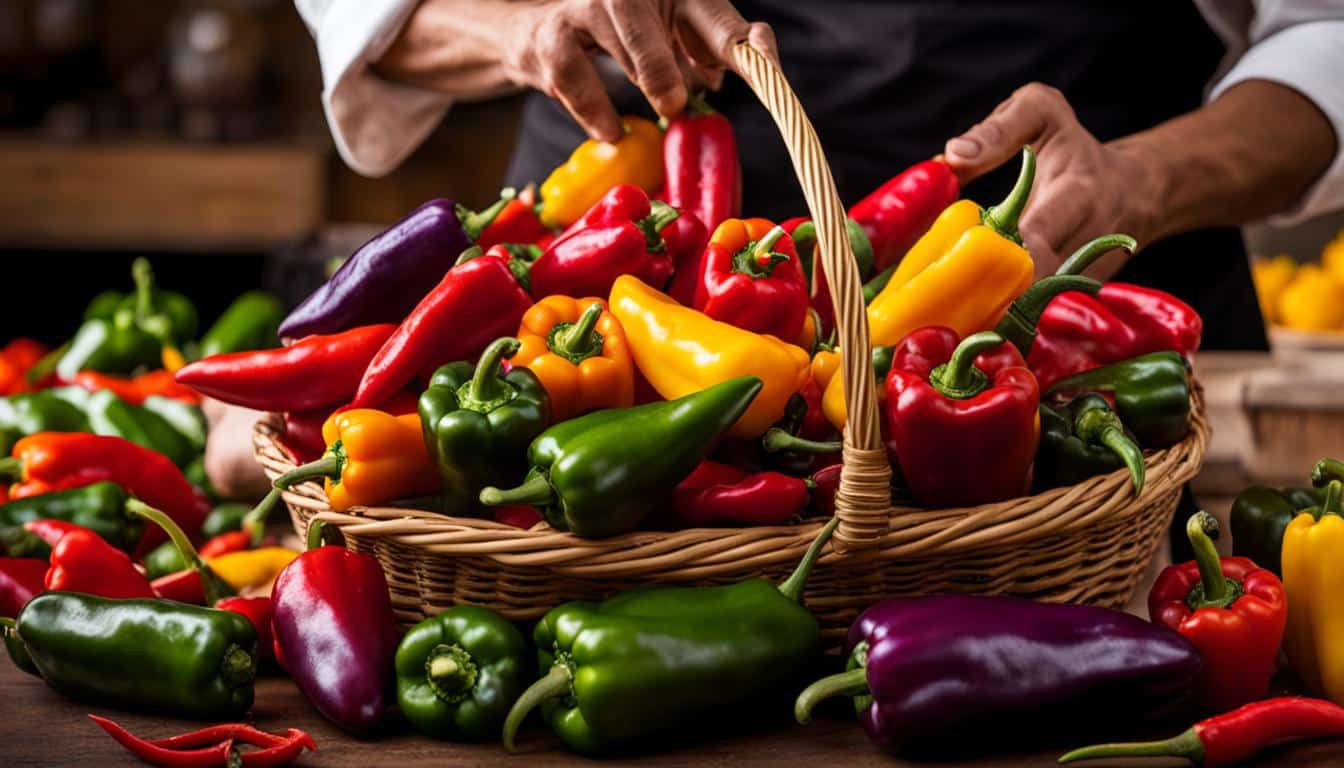
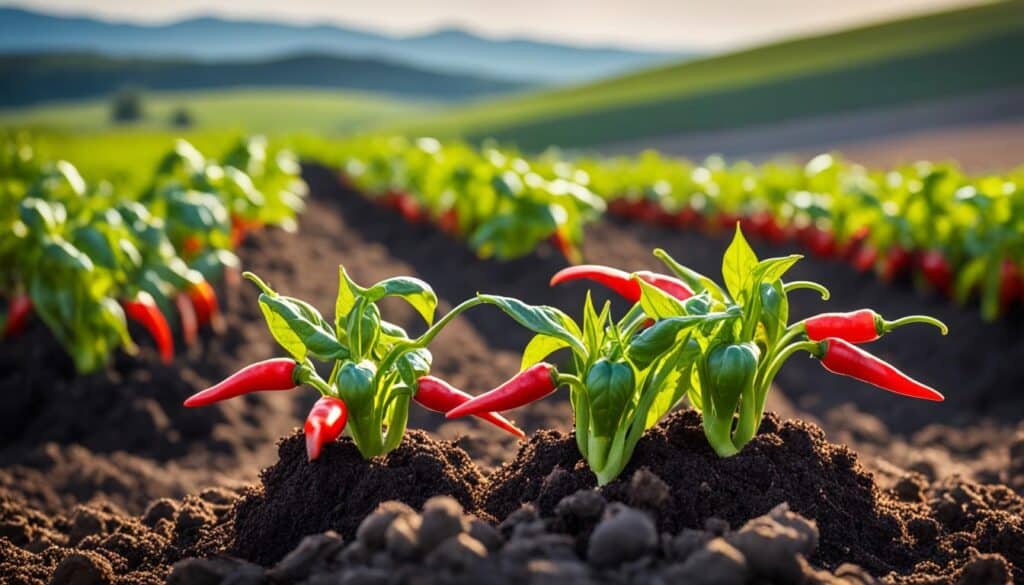
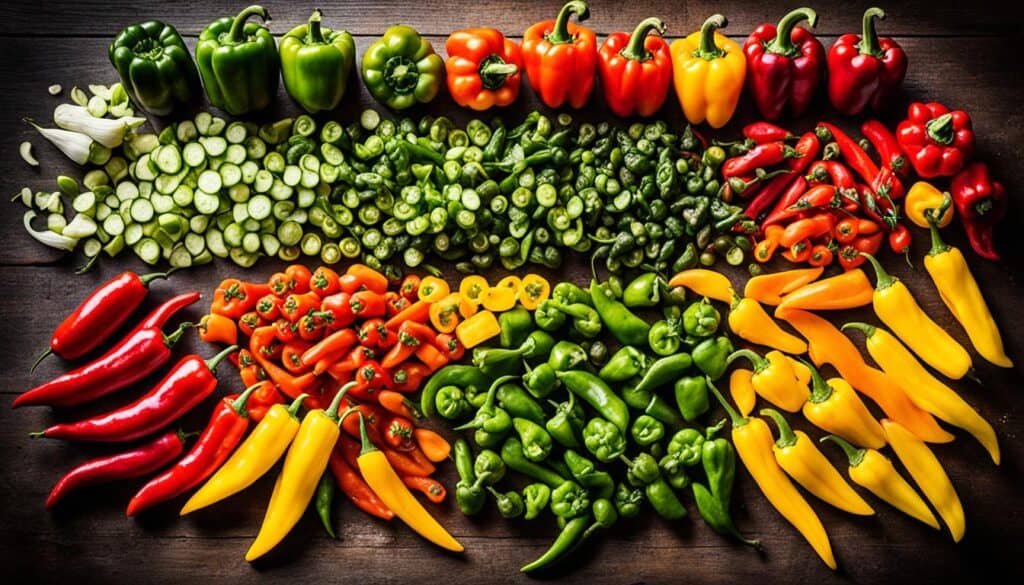
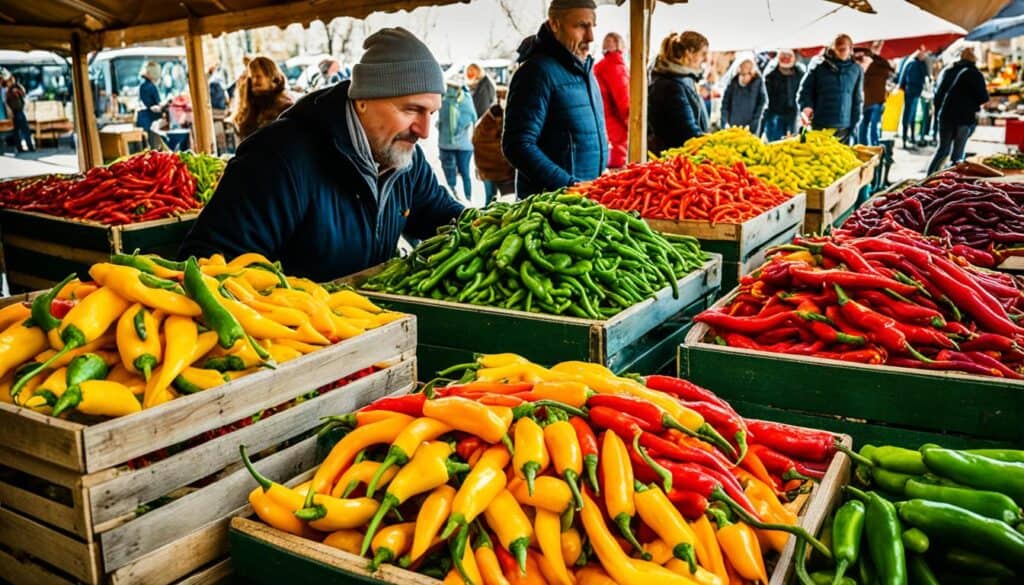
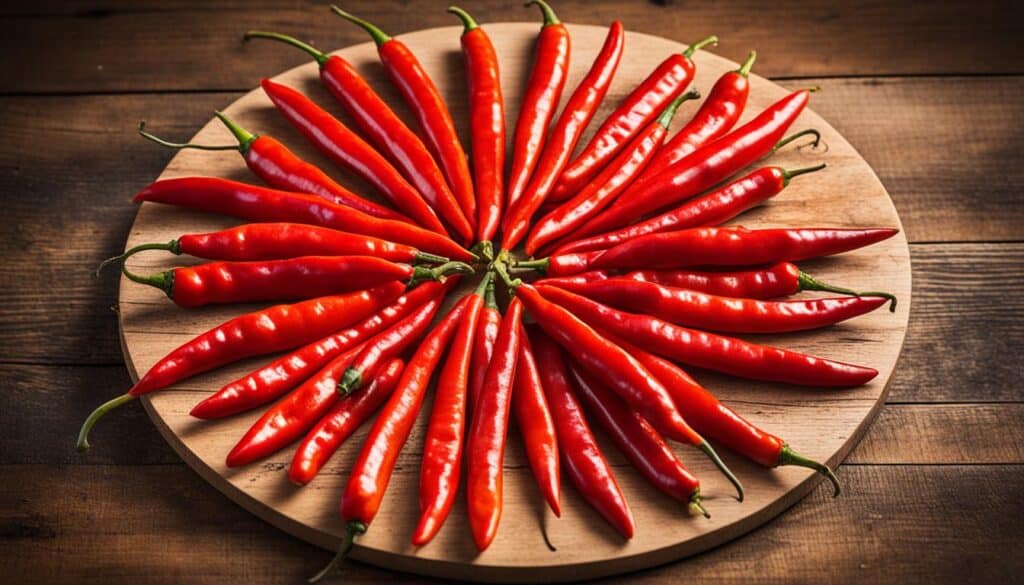
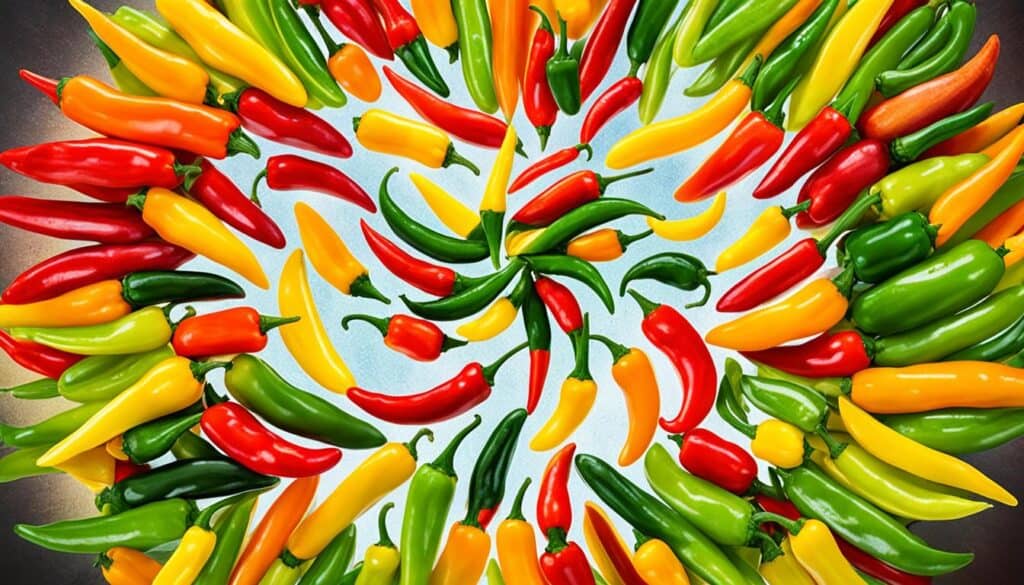



Leave a Reply